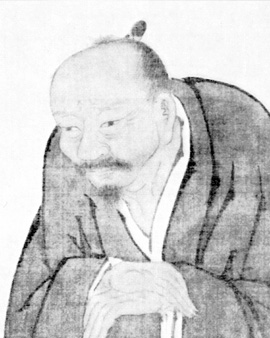Ike no Taiga was born on the island of Kyoto as the son of a low-ranking official, and while many Japanese families benefited from trade relations with Europe, Taiga grew up in poor circumstances. Ike showed great talent. At the age of seven the young artist began to study calligraphy and after a few years he sold works in the Chinese-influenced literary style Nanga. He used Chinese picture books as models for his picture products, which he sold in his own shop. The "painting instructions of the mustard seed garden" was the standard work of art for the generation of Nanga artists.
Taiga developed into an artist who was drawn to nature to depict the impressive landscapes of his homeland. The hitherto independent art of Asia was increasingly subject to European influence. With the depiction "Through a valley of willow trees" Taiga shows an impressive section of the landscape. Ike no Taiga was a well-known calligrapher and in his works "Poems in Praise of the Four Seasons" he combines writing and graphics.
Ike no Taiga was strongly influenced by the developments in Chinese art. He took over painting with de fingers and shows the same talent in technique as with the brush. The artist himself felt more expressive, his finger-painted pictures and on his journey to becoming an accomplished artist Ike captured the beauty of Japan in his works.
×





.jpg)
.jpg)
.jpg)
.jpg)
_-_(MeisterDrucke-1514122).jpg)
_-_(MeisterDrucke-1514122).jpg)
.jpg)
.jpg)
.jpg)
.jpg)
.jpg)
.jpg)
.jpg)
.jpg)
_-_Partie_gauch_-_(MeisterDrucke-1318216).jpg)
_-_Partie_gauch_-_(MeisterDrucke-1318216).jpg)
.jpg)
.jpg)
.jpg)
.jpg)
.jpg)
.jpg)
.jpg)
.jpg)
.jpg)
.jpg)
.jpg)
.jpg)
.jpg)
.jpg)
_-_(MeisterDrucke-643183).jpg)
_-_(MeisterDrucke-643183).jpg)
.jpg)
.jpg)
.jpg)
.jpg)
.jpg)
.jpg)
.jpg)
.jpg)
.jpg)
.jpg)
.jpg)
.jpg)
_-_(MeisterDrucke-1489789).jpg)
_-_(MeisterDrucke-1489789).jpg)
.jpg)
.jpg)
.jpg)
.jpg)
_-_(MeisterDrucke-1643288).jpg)
_-_(MeisterDrucke-1643288).jpg)
_-_(MeisterDrucke-1451583).jpg)
_-_(MeisterDrucke-1451583).jpg)
.jpg)
.jpg)
.jpg)
.jpg)
.jpg)
.jpg)
_-_(MeisterDrucke-1451584).jpg)
_-_(MeisterDrucke-1451584).jpg)






